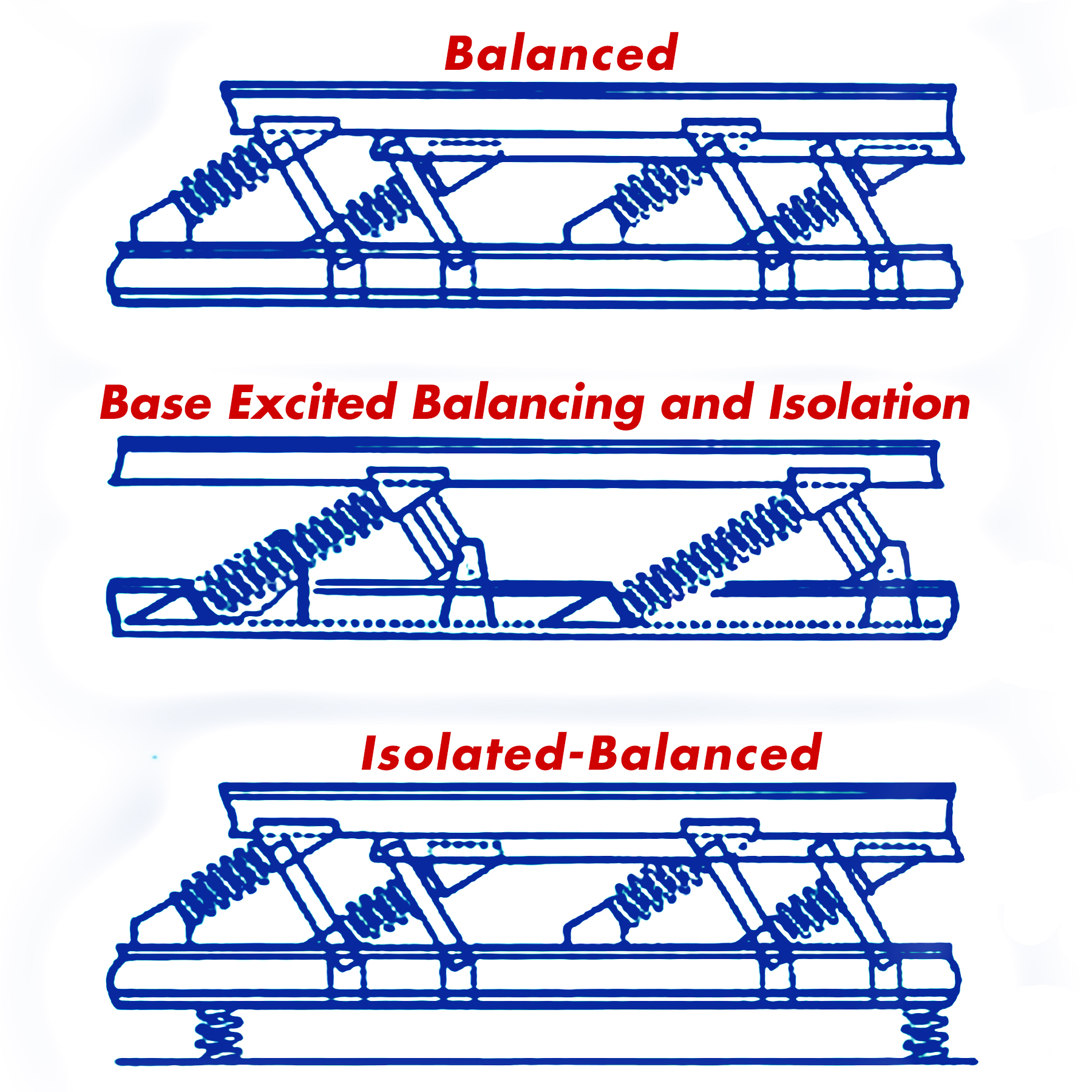
Posted on August 31st, 2018 by Carrier Vibrating
In the vibratory equipment industry there is a constant dedication to research and development to improve old processes and develop new ones to make equipment more efficient and better at performing for our customers. One issue that comes up with any type of large vibration equipment is balancing and isolation to prevent transfer of vibrations to surrounding areas, and this is an area that Carrier has spent countless hours researching and testing.
When a customer wants to know more about using balancing and isolation to prevent vibration transfer, the first thing we let them know is that there is no industry standard for what balancing actually means, so comparing what we call balancing to other balancing is often apples and oranges.
Before we design equipment with the proper balancing and isolation techniques that we’ve developed, we need to know important factors about where the equipment will be operating. Often there are overlooked factors that play into what is needed, such as whether the facility is over a water table that will transfer vibrations through the water, or where in the building the equipment will go and what the building was built to withstand.
Each vibration reduction is a custom solution, but there are several main ways that Carrier engineers use to reduce or isolate vibration reactions:
Base Mounted
This is the simplest and most common method, where the conveyor and supporting springs are mounted to a stationary base that absorbs the vibrations, which is why it is also commonly called a non-balanced system. This base is often attached to a large concrete pad to further absorb the vibrations, but it has a low rate of absorption. It is used when vibration transfer is not a concern or the equipment is smaller and will not cause large vibration issues to begin with.
Isolated Weighted Base Balancing
This method takes a base mounted conveyor where the pan is several times the mass of the fully loaded pan, and then mounts that base on top of isolation springs attached to the floor. This helps keep the vibrations from transferring completely down into the floor and surrounding areas, and can isolate the vibrations by 80-90%.
Balanced
In this method, a counterbalance is added underneath the pan that operates exactly opposite the pan, so that the vibration forces of the pan are cancelled out by the opposite vibration forces of the counterbalance. The use of identical spring systems ensures that equal and opposite forces are constantly maintained, reducing vibration reactions by 90%.
Base Excited Balancing and Isolation
This type uses a full sized counterbalance member under the conveyor pan connected to the pan with a spring system. This counterbalance absorbs the impact from the vibrations, preventing them from transferring into the base and surrounding areas. This method is capable of reducing vibration reactions by up to 95%.
Isolated-Balanced
This is a combination method of mounting a conveyor using a balanced counterweight on top of a weighted base which is then mounted on isolation springs. The counterweight absorbs most of the vibration reaction, but the weighted base and isolation springs continue to absorb further remaining reactions, allowing this method to reduce vibrations by up to 98%.
If you need vibratory equipment and need to make sure the vibrations are reduced, or already have vibrating equipment and are having issues with vibration transfer, contact a Carrier Vibrating Equipment engineer today to find out how we can solve your issue.







